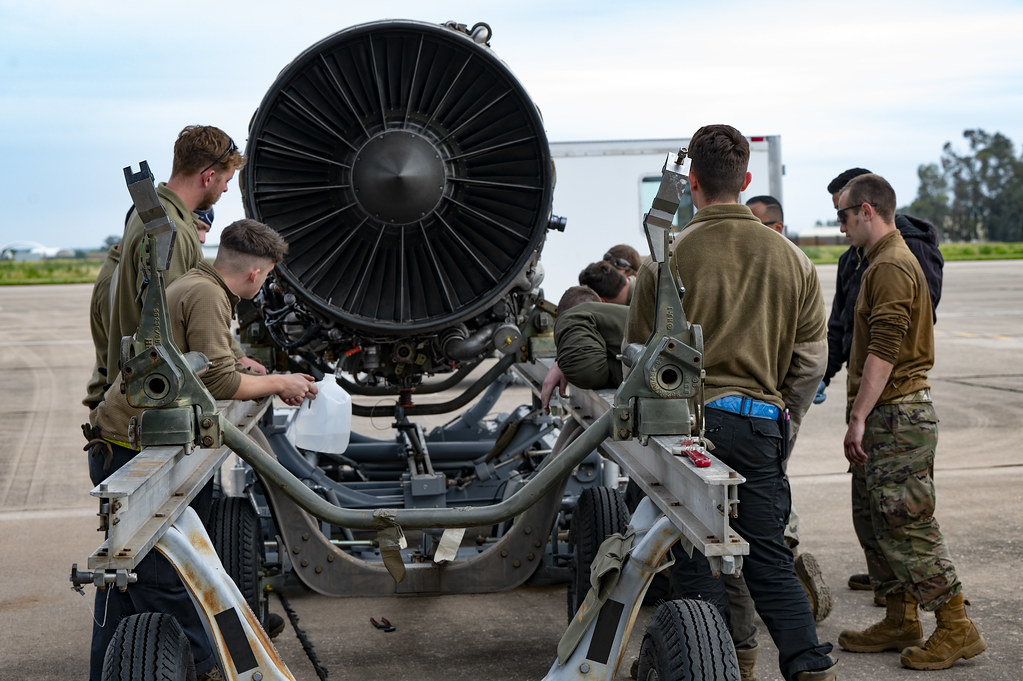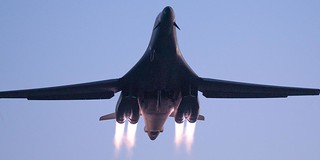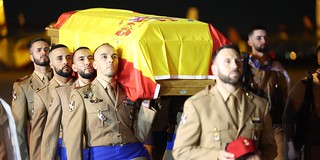Images of the deployment in Spain of two B-1B Lancer strategic bombers
Recently, the United States Air Force (USAF) has carried out a deployment of several B-1B Lancer bombers to Europe.
On March 24, the USAF published a statement on its website noting the following: "Two U.S. Air Force B-1B Lancers assigned to the 7th Bomb Wing, Dyess Air Force Base, Texas, arrived at Morón Air Base, Spain, to begin the next phase of Bomber Task Force 24-2, March 24, 2024."

The USAF noted that during this deployment, "bomber crews and support personnel will generate sorties out of Morón AB and operate alongside numerous Allies and partners to increase interoperability and assure security commitments across the United States European Command area of responsibility."

"The U.S. routinely demonstrates its commitment to NATO Allies and partners with BTF missions. Through these missions, U.S. Air Forces Europe – Air Forces Africa enables dynamic force employment in the European theater, providing strategic predictability and assurance for Allies and partners while contributing to deterrence by introducing greater operational unpredictability for potential adversaries", the statement added.

These deployments of US strategic bombers are common in Europe. Last year several B-52s were deployed in Spain during one of these BTF missions. Logically, Russian threats against NATO make these missions meaningful, since with them the US sends Moscow the message that it is willing to support its allies.

In the last few hours, the multimedia portal DVIDShubt.net of the US Armed Forces has published several series of photos of the deployment of the B-1B Lancer in Spain, images that were taken between April 2 and 5 at the Morón Air Base (Seville), a military installation built in 1941 and used jointly by Spain and the US under a bilateral agreement signed in 1988. You can see some of the published images here.

A B-1B Lancer folding its landing gear after taking off at Morón Air Base on April 5.

The front landing gear of a B-1B Lancer in a photo taken on April 2 in Morón.

A B-1B Lancer taxiing in Morón after an integration mission with Greek Air Force F-16 fighters on April 2.

A B-1B of the 9th Expeditionary Bomb Squadron on April 2 in Morón, after the joint flight with the Greek F-16 fighters.

One of the B-1B crew members, Lieutenant Colonel Ryan Stillwell, of the 9th Expeditionary Bomb Squadron, after a landing in Morón on April 4. On his helmet he wears the distinctive bat of his unit with the Latin motto "Mors ab alto" (Death from above).

Lieutenant Colonel Stillwell boarding his B-1B in Morón on April 4. This photo allows us to observe the Sniper XR AN/AAQ-33 target designators that the two bombers carry on the starboard support of their fuselages.

Airman 1st Class Jonathan Byles, of the 9th Expeditionary Bomb Squadron, guiding a B-1B Lancer into Morón on April 2. On each of these deployments, USAF bomber units also deploy their own ground personnel.

The two B-1B Lancers deployed in Spain on the platform of the Morón Air Base. In this photo you can see that the front landing gear doors of both planes have painted emblems with the silhouette of Texas , the state where the Dyess AFB base, to which this bomber unit is assigned, is located.

The two B-1B Lancers taxiing in Morón on April 5. We see the planes from behind. The image shows the span of the Lancer's variable geometry wings when deployed: 45 meters. When folded, the wingspan is reduced to 23.8 meters.

A B-1B taking flight from Morón on April 5. The plane in the image is 86-0125 / AF86-125.

A ground crew member from the 9th Expeditionary Bomb Squadron guiding a B-1B Lancer in Morón on April 2.

Personnel from the 9th Expeditionary Bomb Squadron doing a pre-flight inspection of the two B-1B Lancers in Morón on April 2.

USAF maintenance personnel doing an engine change on a B-1B Lancer in Morón on April 3. In addition to maintenance personnel, each bomber unit has to deploy spare parts for these types of missions.

A B-1B Lancer showing its beautiful lines in Morón on April 2. The B-1 made its first flight on December 23, 1974 but did not enter service until 1986. Today it is the USAF's only supersonic strategic bomber model (both the B-52 and B-2 are subsonic aircraft).

Captain Kevin McNeeley, a weapons systems officer, boarding his B-1B in Morón on April 2. The B-1B carries a crew of four: commander, pilot, weapons systems officer, and defensive systems officer. The first two sit at the front of the cockpit and the other two sit behind. All four are seated in ejection seats.

A B-1B Lancer on the Morón runway on April 2. The forecasts are that the Northrop Grumman B-21 Raider start to replace the B-1B in 2025 and that the entire fleet of these supersonic bombers will be out of service in 2036.
|
Don't miss the news and content that interest you. Receive the free daily newsletter in your email: |
- Most read
- US F-35A fighters flying with Polish F-16s over Poland at a time of great tension
- The brutal 'touch and go' of a Lufthansa Boeing 747 at Los Angeles Airport
- The deployment of Spanish soldiers of the Regulars and BRILAT near Russian territory
- Eurofighter vs F-35: the opinions of professional pilots on these advanced fighters
- The firearms used by the Pontifical Swiss Guard, the smallest army in the world
- Sierra Army Depot, a huge United States base with hundreds of Abrams tanks stored
- The Harrier IIs of the Spanish Navy fly with F-16 and F-4E of the Hellenic Air Force

 ES
ES







Opina sobre esta entrada: